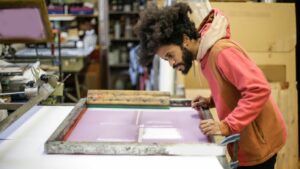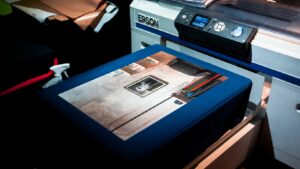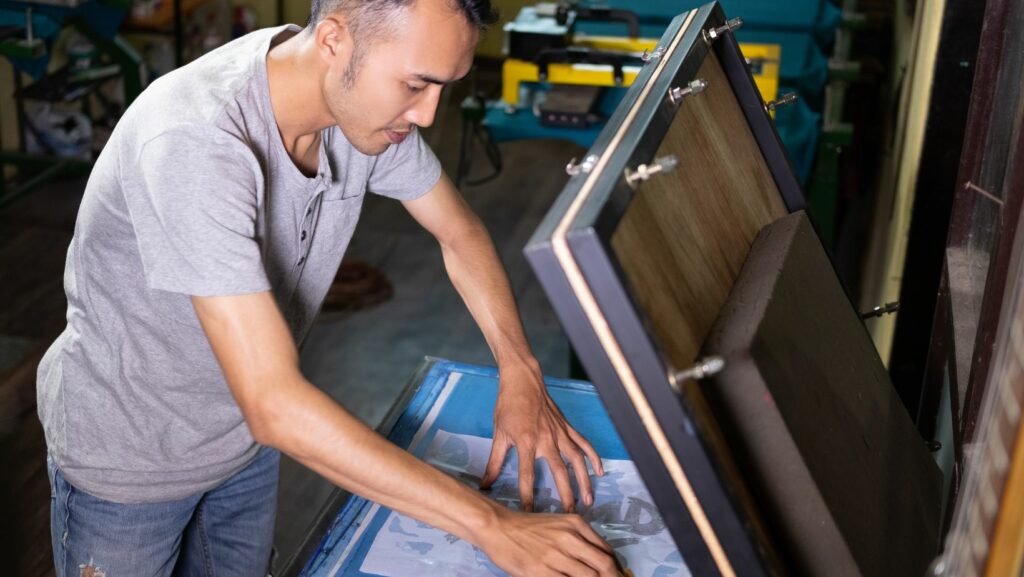Manual Printing
In today’s digital age, manual printing might seem like a relic of the past, but it holds a unique charm and practicality that modern  technology can’t replicate. From the tactile satisfaction of pressing ink onto paper to the creative freedom it offers, manual printing remains a cherished craft for artists, hobbyists, and small business owners alike.
technology can’t replicate. From the tactile satisfaction of pressing ink onto paper to the creative freedom it offers, manual printing remains a cherished craft for artists, hobbyists, and small business owners alike.
Despite the convenience of digital printers, manual printing techniques like screen printing, letterpress, and block printing continue to thrive. They provide a hands-on approach that allows for greater customization and a personal touch, resulting in one-of-a-kind pieces that stand out in a world of mass-produced items. Whether you’re delving into manual printing for artistic expression or exploring it for its business potential, this age-old practice offers a rewarding experience that bridges tradition and innovation.
Understanding Manual Printing
Manual printing involves techniques that require direct human input. Unlike digital printing, which relies on automated processes, manual methods use hands-on approaches and physical tools. This section covers methods, key components, and why people still prefer them.
Techniques in Manual Printing
Different methods facilitate manual printing, each with unique attributes:
- Screen Printing: Involves creating stencils (screens) and using them to apply ink onto the printing surface. This technique is versatile and used for textiles, posters, and other materials.
- Letterpress: Uses raised metal type and images to press ink onto paper. It provides a distinct tactile quality.
- Block Printing: Carving a design into wood, linoleum, or rubber blocks and pressing them onto paper or fabric. Ideal for creating repeated patterns and detailed designs.
Key Components of Manual Printing
Manual printing requires specific tools and materials:
- Inks: Essential for transferring designs onto the desired surface. Common types include water-based, oil-based, and specialty inks.
- Screens/Stencils: Utilized in screen printing for transferring images.
- Presses: Used in letterpress printing to exert pressure on the inked surface.
- Blocks: Carved materials in block printing.
Popularity and Preference
Manual printing remains favored:
- Customization: Manual methods allow for personal touches and unique artifacts.
- Craftsmanship: Physical involvement provides a sense of accomplishment and connection to the final product.
- Aesthetic Appeal: Handmade prints offer textures and imperfections digital prints can’t replicate.
These aspects make manual printing a popular choice despite technological advances.
History Of Manual Printing
Manual printing dates back thousands of years, evolving through various techniques and methods, each contributing to modern practices.
Early Beginnings
The earliest known form of manual printing appeared around 3500 BCE. The Sumerians created cylindrical seals rolled over clay to produce images and inscriptions. Around 1040 CE in China, movable type printing emerged with baked clay type. This invention allowed for more efficient reproduction of texts compared to previous methods.
Evolution Over Centuries
The 15th century marked a significant advancement in manual printing with Johannes Gutenberg’s invention of the printing press around 1440. This device used movable metal type, sparking the spread of books and literacy in Europe. Over the next few centuries, various enhancements were made. In the 19th century, the Industrial Revolution introduced steam-powered presses, increasing speed and efficiency. Each advancement contributed to making manual printing more accessible and efficient, laying the groundwork for contemporary techniques like screen printing and letterpress.
Types Of Manual Printing Techniques
Manual printing offers a range of techniques that merge traditional craftsmanship with modern artistic expressions. Each method provides unique results and applications.
Relief Printing
 Relief printing involves carving a design into a surface, leaving raised areas to apply ink to the paper. The raised areas form the design, while the carved-out sections remain ink-free. The two main types are woodcut and wood engraving. Woodcuts use softwood like pine or basswood, whereas wood engravings use hardwood like boxwood. This technique excels in creating bold, high-contrast images. Artists and printmakers value relief printing for its textural details and graphic quality.
Relief printing involves carving a design into a surface, leaving raised areas to apply ink to the paper. The raised areas form the design, while the carved-out sections remain ink-free. The two main types are woodcut and wood engraving. Woodcuts use softwood like pine or basswood, whereas wood engravings use hardwood like boxwood. This technique excels in creating bold, high-contrast images. Artists and printmakers value relief printing for its textural details and graphic quality.
Lino Printing
Lino printing, or linocut, is a specific form of relief printing. Artists carve designs into linoleum blocks, resulting in raised patterns that are inked and transferred onto paper. The linoleum’s smooth and pliable surface allows for easy carving of intricate designs. Lino printing gained popularity for its versatility, enabling both simple and complex compositions. It’s widely used for posters, art prints, and educational purposes because of its accessibility and affordability.

